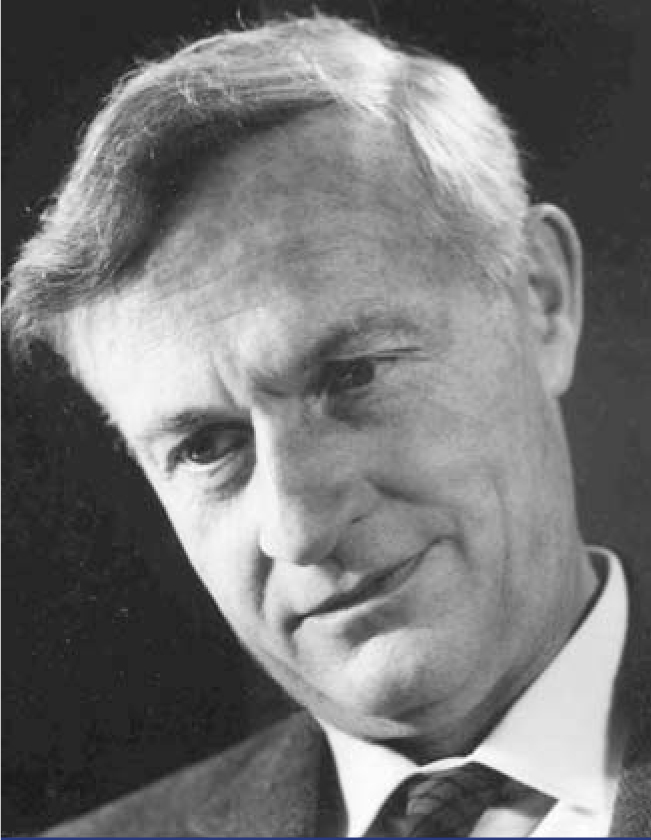Markus Eduard Fierz
DOI: 10.1063/1.2711647
Markus Eduard Fierz, professor emeritus of theoretical physics at ETH Zürich in Switzerland, died peacefully on 20 June 2006, his 94th birthday, after a rich, harmonious life. Fierz made significant contributions to relativistic quantum field theory and to general relativity, the most important new physics theories in his younger days.
Born on 20 June 1912 in Basel, Switzerland, Fierz went to the University of Göttingen, Germany, in 1931 to study physics and biology. There he enjoyed the inspiring lectures of Hermann Weyl and studied the works of Immanuel Kant. After the Nazis came to power in 1933, Fierz returned to Zürich to major in physics under the guidance of Gregor Wentzel at the University of Zürich and Wolfgang Pauli at ETH.
In his doctoral dissertation, completed in 1936 under the supervision of Wentzel, Fierz discovered the infrared catastrophe in the description of scattering processes of relativistic charged particles. He found a divergent scattering cross section in the lowest nontrivial order due to the emission of soft photons. Fierz spent the 1936 summer term in Germany at the University of Leipzig’s Institute for Theoretical Physics, headed by Werner Heisenberg, then returned to Zürich to become Pauli’s assistant.
In 1937, in his work on Fermi’s theory of beta decay, Fierz succeeded in reducing to five the number of invariant matrix elements without derivative couplings using what are now called Fierz transformations. This work allowed him to compute the beta spectra and neutron–proton forces for a general linear combination of the five invariants, an elegant and modern approach.
Inspired by the work of Felix Bloch and Arnold Nordsieck, in 1938 Pauli and Fierz studied what is now known as the Pauli–Fierz model of a nonrelativistic electron coupled to the radiation field. This exactly solved model has scattering states that carry a representation of the canonical commutation relations inequivalent to the Fock representation. The infrared divergencies occur in an unjustified perturbative expansion.
Fierz’s most important result, accomplished in 1939, was his proof of the general connection of spin and statistics of elementary particles, namely Bose–Einstein statistics for integer spin and Fermi–Dirac statistics for half-integer spin. Fierz received the Max Planck Medal for this work in 1979. In the 1950s and 1960s, the result was generalized by others to interacting fields, which satisfied the Wightman axioms of general quantum field theory; it is one of the pillars of particle physics. In joint work with Pauli, Fierz applied his methods to fields that have electromagnetic interactions. Their results on the local gauge groups of massless particles of spin
After spending four years as Pauli’s research assistant, Fierz became a Privatdozent from 1940 to 1943. Between 1943 and 1959, he was a professor of theoretical physics at the University of Basel, then served as the director of CERN’s theory division for one year. In a beautiful paper published in 1950, Fierz clarified the causality properties of the Stückelberg-Feynman propagator. The magic decomposition of the causal propagator into a sum of the retarded and advanced propagators (Dc = Dret + Dav) influenced the younger generation’s work on renormalized perturbation theory.
In 1960 he succeeded Pauli at ETH. With his colleague and friend Res Jost, Fierz inspired the research, style, and atmosphere at ETH’s Institute for Theoretical Physics, which at that time was an international magnet for theoreticians who had a taste for the more mathematical aspects of theoretical physics. In 1989 Fierz was awarded the Einstein Medal by the Albert Einstein Society in Bern.
Fierz’s thinking was strongly influenced by Pauli and Carl Gustav Jung. He was closely tied to both men intellectually and by friendship. Due to their influence, Fierz gained a deep understanding of the two complementary worlds of physics and psychology, which inspired him to write many illuminating essays.
After he retired from ETH in 1977, Fierz was intensely preoccupied with the history of science. His 1977 book on Girolamo Cardano describes the center of Italy’s intellectual life two generations before Galileo. Written from a premodern perspective, it is a magnificent tour through Renaissance science, medicine, and theology, bringing out the many interesting sides of this nowadays “unfashionable” world. Fierz’s ETH lecture notes on the history of mechanics were translated into Japanese. He had an exceptional understanding of Isaac Newton’s Principia, which in its original language and geometric reasoning is difficult for us contemporary physicists to comprehend. Masterful are his essays on the origin and significance of the concept of absolute space and on the early history of the Royal Society of London. With his impressive knowledge, sharp view of the essential points of science, and fine intuition, Fierz thought and sensed the spirit and importance of some of the greatest figures of our civilization, Newton and Johann Wolfgang Goethe among them, making their work accessible to a modern public and placing it into the context of our time.
Although he became increasingly fragile in his last years, he retained his phenomenal memory and a mental serenity and grace that impressed his visitors. Many of us remember with deep gratitude the illumination and friendship that Markus Fierz has given to us.

Markus Eduard Fierz
BARBARA KRUCK

More about the Authors
Jürg Fröhlich. ETH Zürich, Switzerland.
Klaus Hepp. ETH Zürich, Switzerland.
Peter Minkowski. University of Bern, Switzerland.




